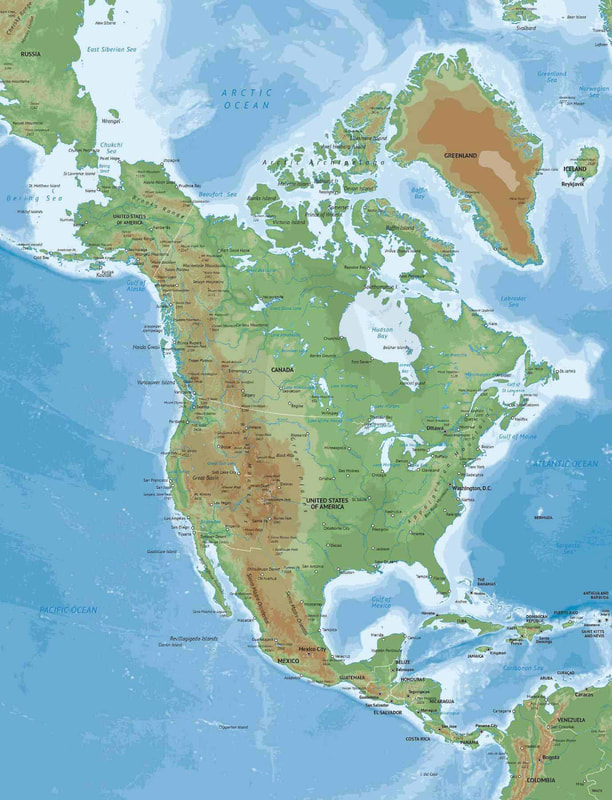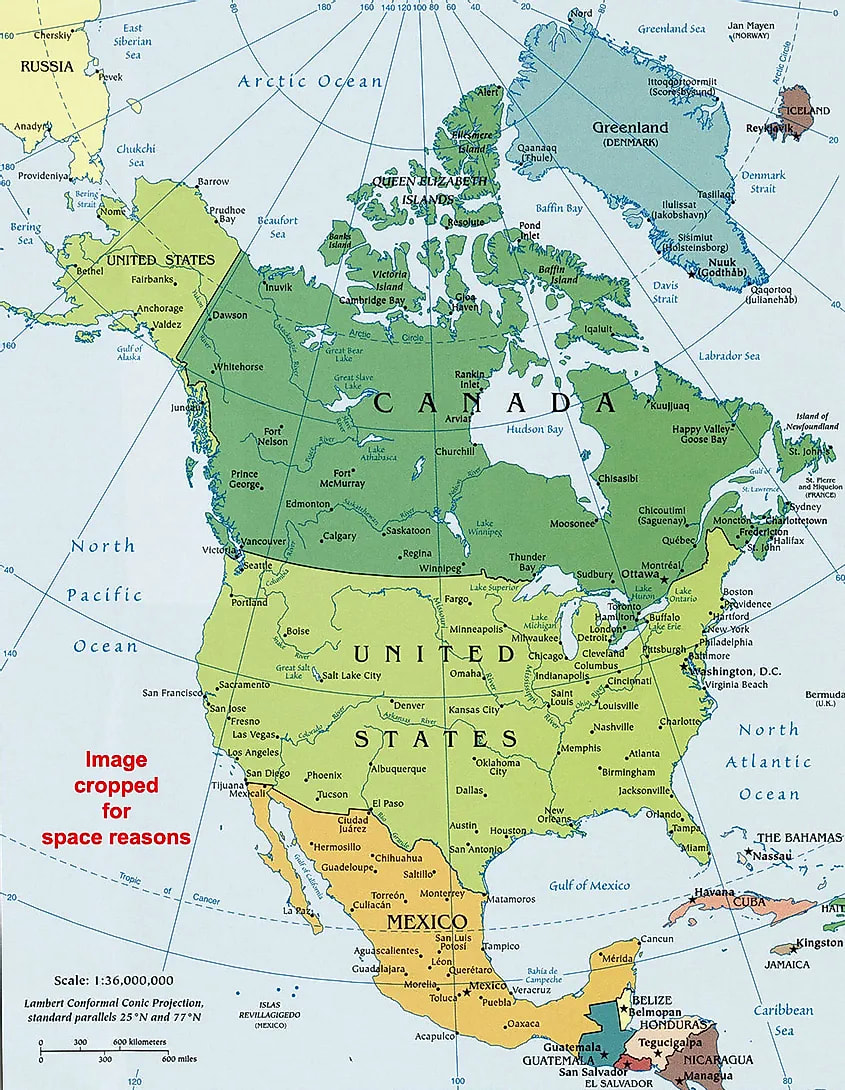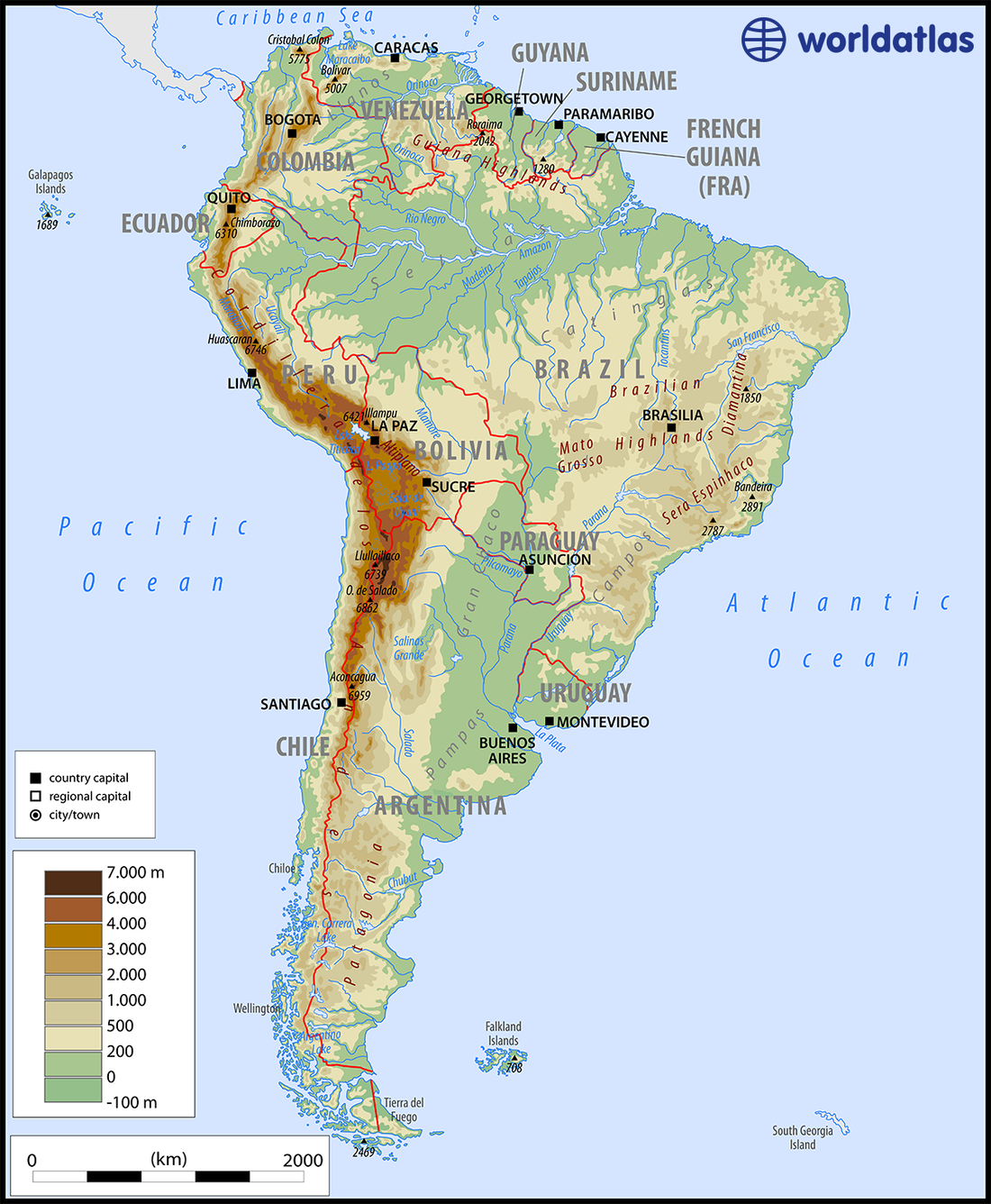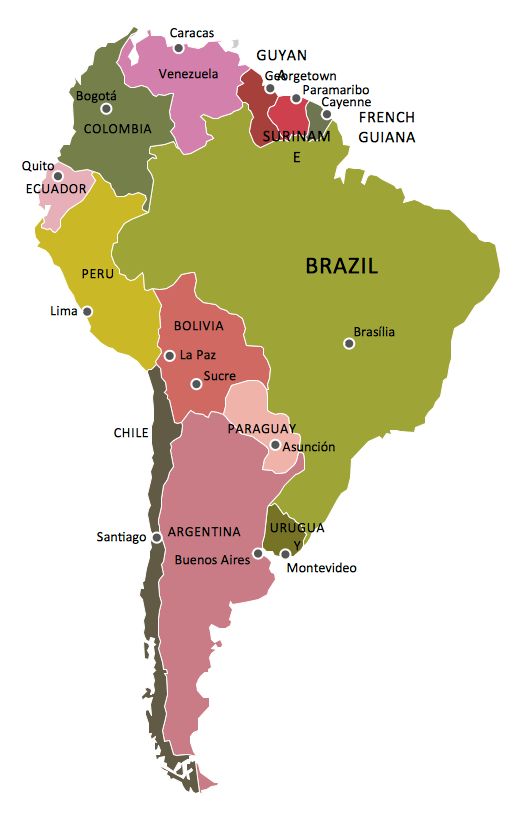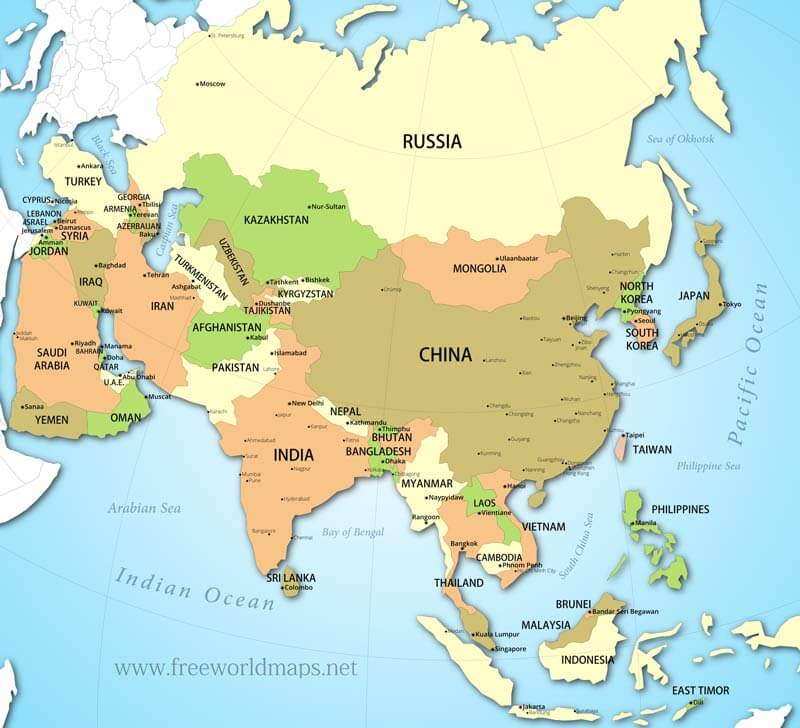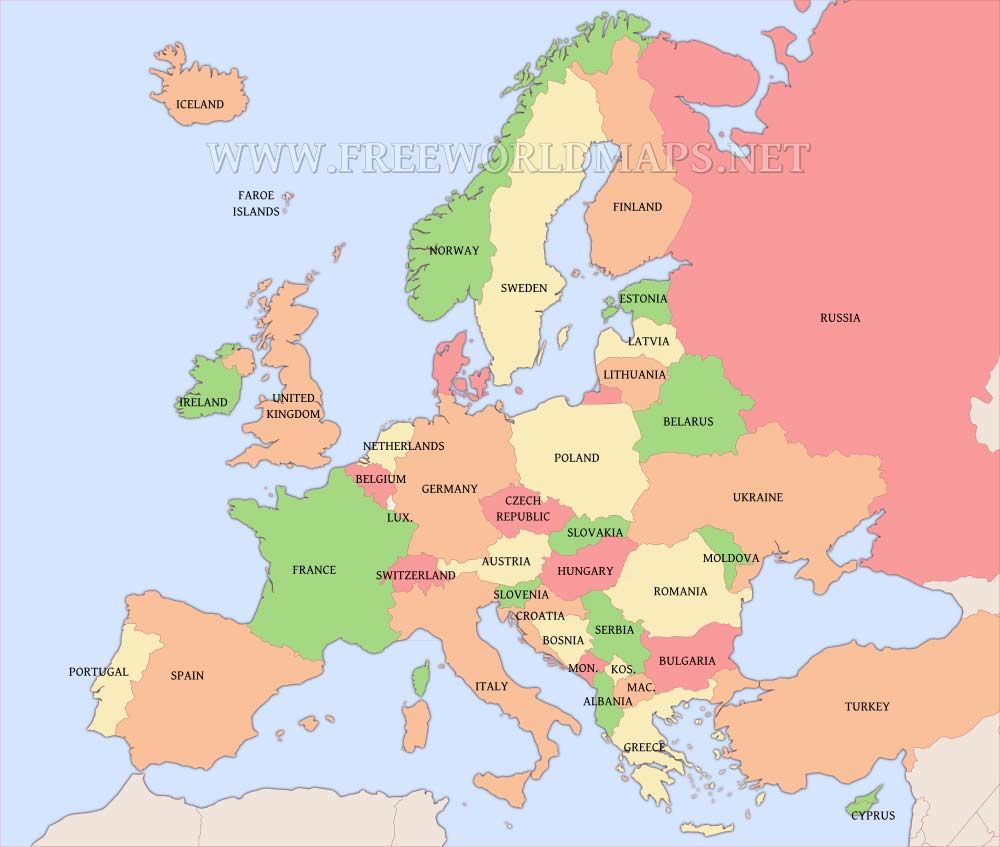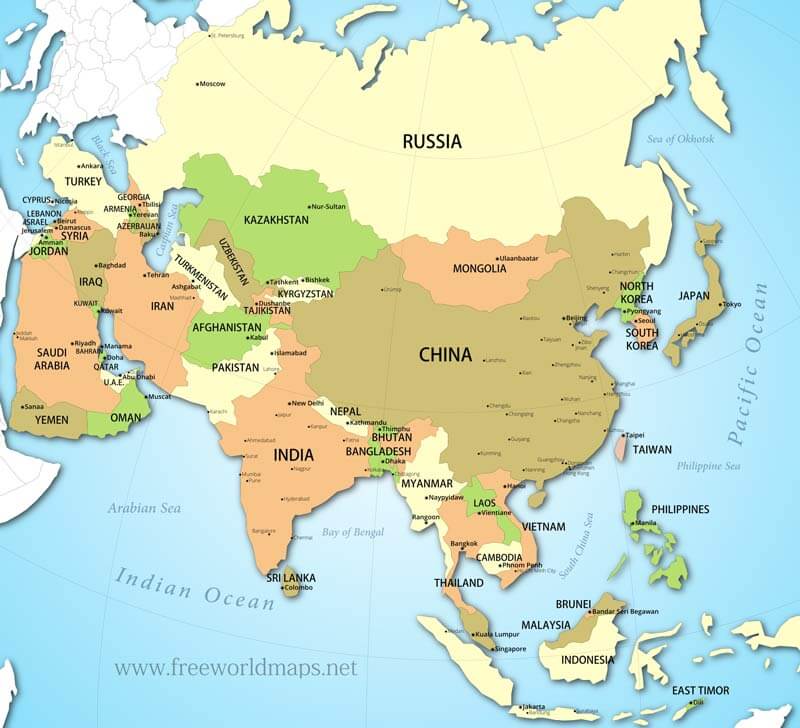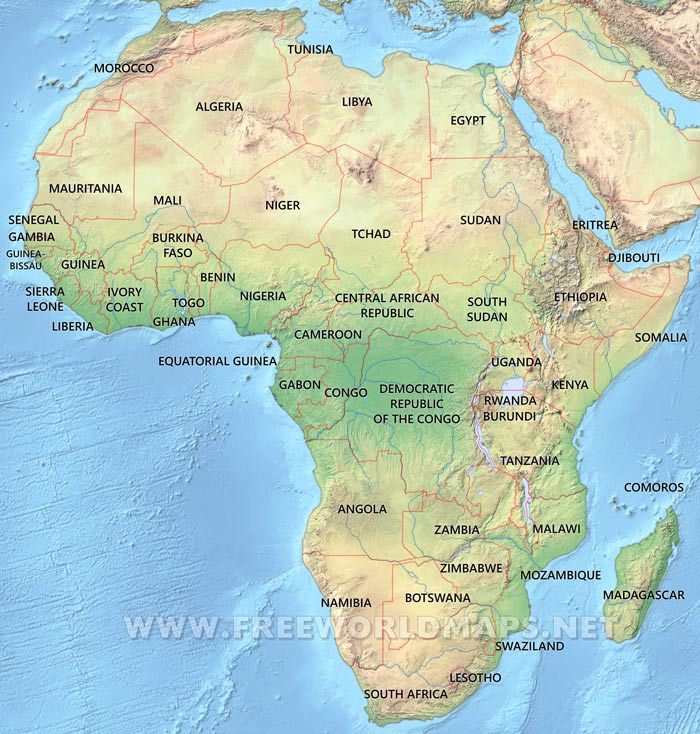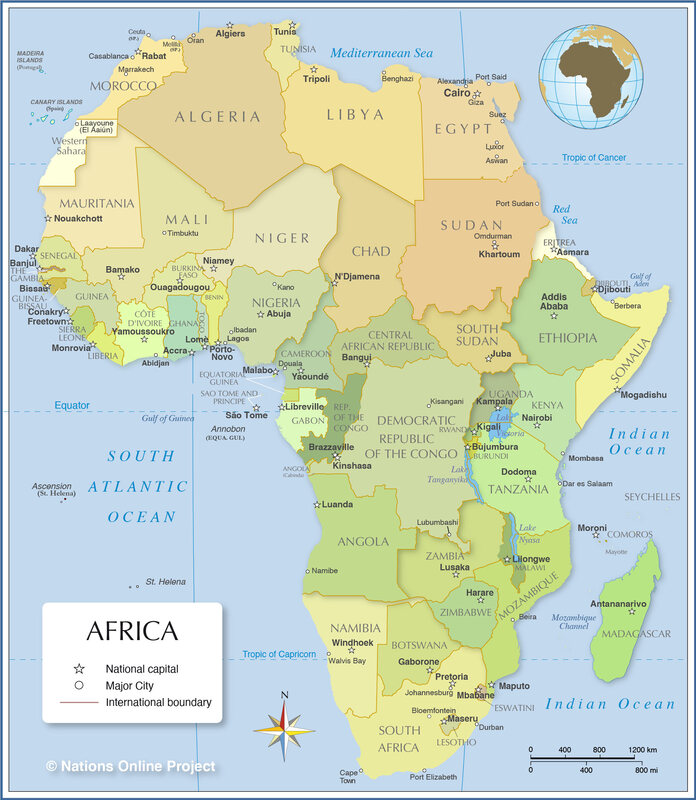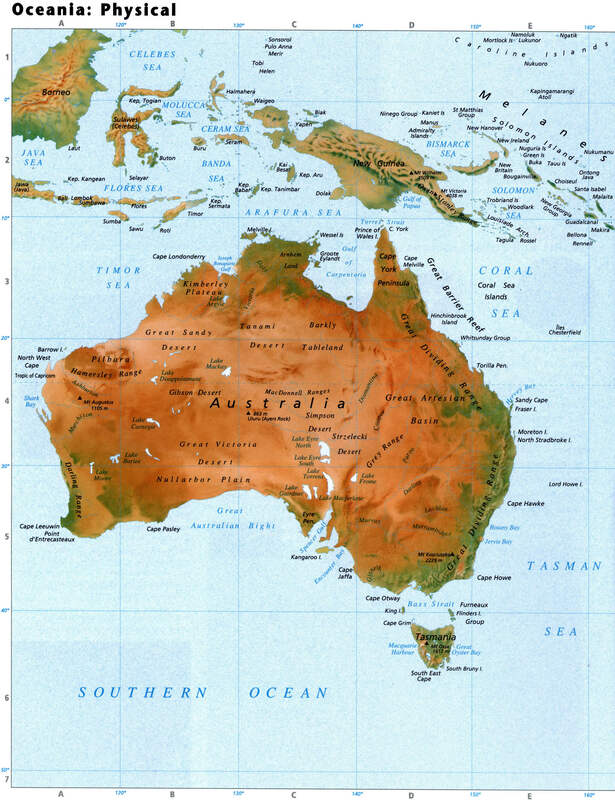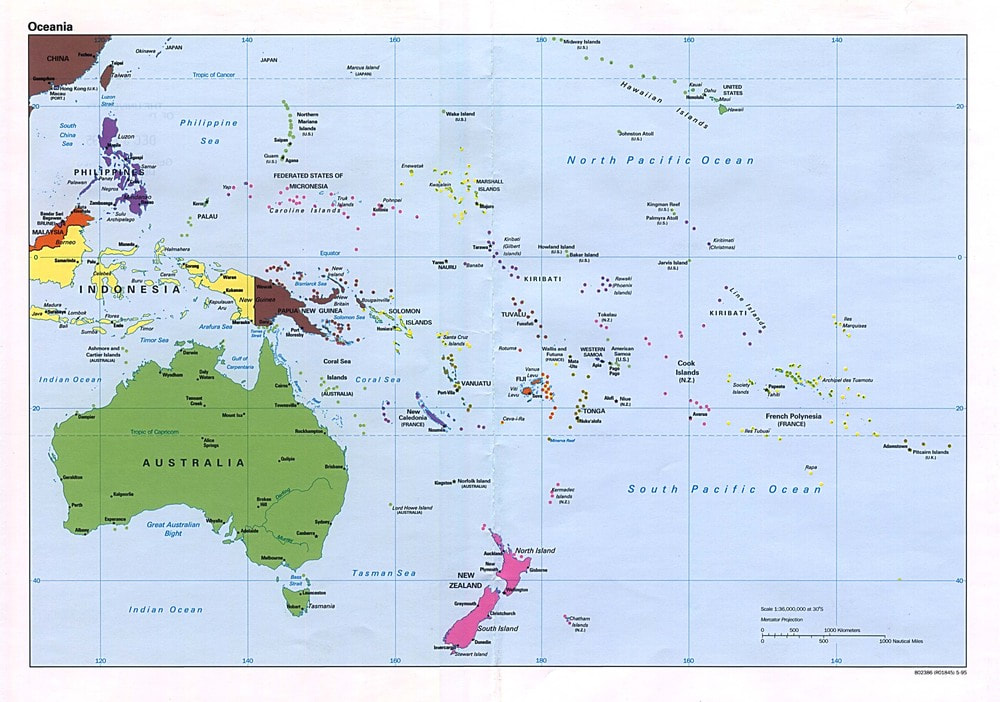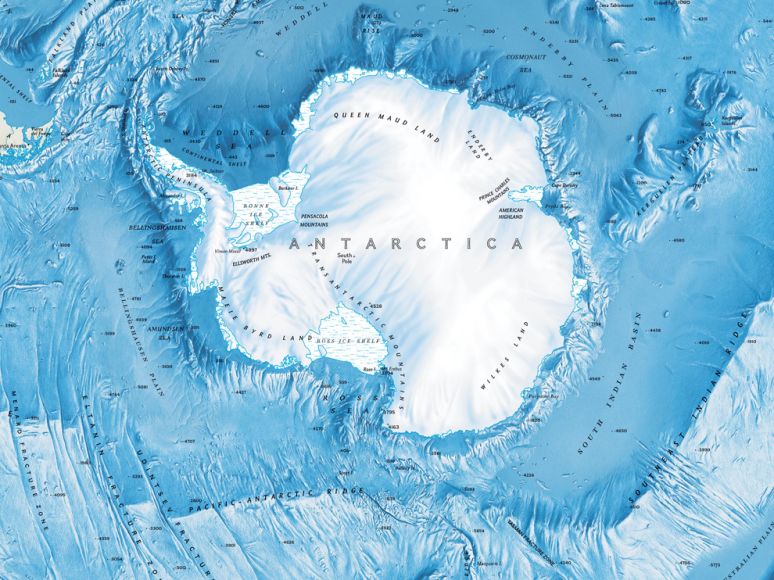North America: Land of Contrasts
|
From the windswept tundra of Alaska, U.S.A., to the rainforest of Panama, the third largest continent stretches 5,500 miles, spanning natural environments that are home to wildlife from polar bears to jaguars. Over thousands of years, Native American groups spread across these varied landscapes. But this rich mosaic of cultures largely disappeared before the onslaught of European fortune hunters and land seekers. While abundant resources and fast-changing technology have brought prosperity to Canada and the United States, other countries wrestle with the most basic needs. Promise and problems abound across this contrasting realm of 23 countries and 534 million people.
|
|
Physical Features
|
Political Features
|
Countries
|
|
|
South America: A Mix of Old and New
|
South America stretches from the warm waters of the Caribbean to the frigid ocean around Antarctica. Draining a third of the continent, the mighty Amazon carries more water than the world's next ten biggest rivers combined. Its basin contains the planet's largest rain forest. The Andes tower along the continent's western edge from Colombia to southern Chile. The Amerindian peoples who lived in the Andes were no match for the gold-seeking Spanish who arrived in 1532. They, along with the Portuguese, ruled most of the continent for almost 300 years. Centuries of ethnic blending have woven Amerindian, European, Africa, and Asian heritages into South America's rich cultural fabric.
|
Countries
|
|
|
Europe: Small Spaces, Diverse Places
|
A cluster if islands and peninsulas jutting west from Asia, Europe is bordered by two oceans and more than a dozen seas, which are linked to inland areas by canals and navigable rivers such as the Rhine and Danube. The continent boasts a bounty of landscapes. Sweeping west from the Urals is the fertile Northern European Plain. Rugged uplands form part of Europe's western coast, while the Alps shield Mediterranean lands from frigid northern winds. Here, first Greek and then Roman civilizations laid Europe's cultural foundation. Its colonial powers build wealth from vast empires, while its inventors and thinkers revolutionized world industry, economy, and politics. Today, the 27-member European Union seeks to unite the continent's diversity.
|
Countries
|
|
|
Asia: World Champion
|
From Turkey to the eastern tip of Russia, Asia sprawls across nearly 180 degrees of longitude - almost half the globe! It boasts the highest (the Himalaya) and lowest (the Dead Sea) places on Earth's surface. Then there are Asia's people - more than four billion of them. That's more people than live on all the other continents put together. Asia has both the most farmers and the most million-plus cities. The world's first civilizations arose in Sumer, in what is now southern Iraq. Rich cultures also emerged along rivers in present-day India and China, strongly influencing the world ever since.
|
Countries
|
|
|
Africa: A Complex Giant
|
Africa spans nearly as far west to east as it does north to south. The Sahara - the world's largest desert - covers Africa's northern third, while to the south lie bands of grassland, tropical rain forest, and more desert. The East African Rift system marks where shifting plates are splitting off the continent's edge. Africa has a wealth of cultures, speaking some 1,600 languages - more than on any other continent. Though still largely rural, Africans increasingly migrate to booming cities like Cairo, Lagos, and Johannesburg. While rich in natural resources, from oil and coal to gemstones and precious metals, Africa is the poorest continent, long plagued by outside interference, corruption, and disease.
|
Countries
|
|
|
Australia, New Zealand, and Oceania: World's Apart
|
This vast region includes Australia - the world's smallest continent - New Zealand, and a fleet of mostly tiny island worlds scattered across the Pacific Ocean. Apart from Australia, New Zealand, and Papua New Guinea, Oceania's other 11 independent countries cover about 25,000 square miles, an area only slightly larger than half of New Zealand's North Island. Twenty-one other island groups are dependencies of the United States, France, Australia, New Zealand, or the United Kingdom. Long isolation has allowed the growth of diverse marine communities such as Australia's Great Barrier Reef and the evolution of platypuses, kangaroos, and other land animals that live nowhere else on the planet.
|
Countries
|
|
|
|
|
Antarctica
|
Antarctica is the coldest, windiest, and even the driest continent. Though its immense ice cap holds 70% of the world's fresh water, its interior averages less than 2 inches of precipitation per year. Hidden beneath the ice is a continent of valleys, mountains, and lakes, but less than 2% of the land breaks through the ice cover. Reaching toward South America is the Antarctic Peninsula, the most visited of Antarctic regions. Though it is remote and mostly inhospitable, issues of human impact abound: fishing in rich but fragile waters that are sometimes called the Southern Ocean, future mining rights, and concern about the impact of global warming on the ice sheet.
|
|
|
|
